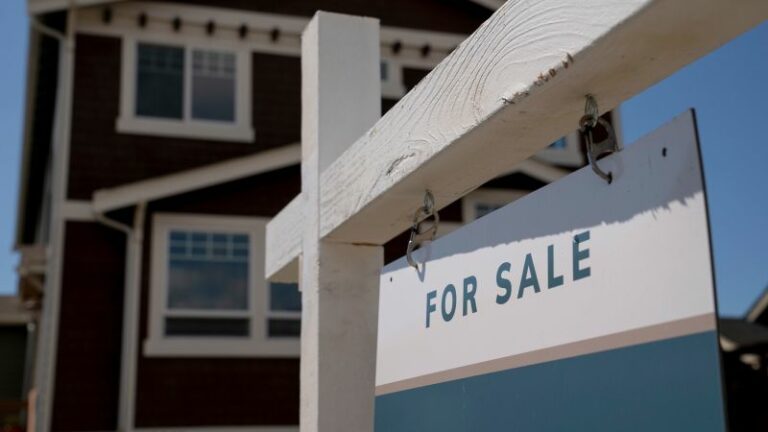This is Part 1 of Federal News Network’s special report looking at agency efforts to shrink the federal real estate footprint. Click here for Part 2.
A six-year experiment meant to help the federal government quickly sell or dispose of its underutilized real estate is running out of time.
Congress created the Public Buildings Reform Board as a small, independent agency under the 2016 Federal Assets Sale and Transfer Act (FASTA), to help the federal government’s landlord, the General Services Administration, identify federal buildings and properties that agencies no longer need, and to sell or repurpose them.
In fiscal 2022, the 24 largest federal agencies owned nearly a quarter million buildings, covering more than 2.4 billion square feet, according to the latest GSA data. That portfolio of owned buildings accounts for more than $16 billion in annual costs.
The federal footprint of owned buildings has steadily decreased over the past decade. But the Government Accountability Office says agencies holding onto excess and underutilized office space is one of the main reasons it’s kept federal real property management on its High-Risk List since 2003.
The PBRB got started in 2019. In those early days, its backers compared the scope of the board’s work to the controversial Base Realignment and Closure (BRAC) that shook up the Defense Department’s footprint of military bases across the country.
Members of the board, so far, have given the Office of Management and Budget two rounds of recommendations. Along the way, OMB blocked the board-recommended sale of a National Archives and Records Administration facility in Seattle, after tribal governments sued the Biden administration over the site’s disposal.
The board also lost, and then regained a quorum in 2022.
Meanwhile, the COVID-19 pandemic created uncertainty over what space agencies still deemed underutilized. It also kicked off an ongoing conversation about the future workforce for federal employees, and changed expectations of how often a telework-adept workforce needs to be in the office.
Under the FASTA, the board will disband in May 2025. But current and former federal real estate experts say the board’s work has grown exponentially, and in unimaginable ways from when lawmakers first passed the legislation.
Those experts — while mixed on the PBRB’s results to date — say the federal government faces a once-in-a-generation opportunity to shed underutilized property, after the pandemic gave the federal workforce greater flexibility to telework. Now they’re pushing Congress to reauthorize the PBRB, and to expand its authorities to take on this work.
A ‘once-in-a-lifetime opportunity’
PBRB members, at their last public meeting last September, gave measured praise to their work to date, but also expressed frustration with the hurdles they’ve encountered to get this far, and the challenges that remain.
Among their challenges, board members say agencies aren’t forthcoming with providing data on underutilized or excess property, and that GSA’s real estate data, as captured in the Federal Real Property Profile, gives an incomplete picture of what space is actually underutilized.
“Just because it’s underutilized in the database doesn’t mean it’s ready for repurposing,” Paul Walden, the board’s executive director, said in an interview.
Meanwhile, OMB rejected a whole slate of recommendations from the PBRB in January 2022, on the grounds that it was “unable to conclude that the risks to the government posed by the disposition of the proposed properties are acceptable to the taxpayer.”
Members of the board, so far, have given OMB two rounds of recommendations. Its third, and final round of recommendations, is due December 2024.
Board member Talmage Hocker, founder of a private real estate firm in Lexington, Kentucky, said at the PBRB’s Sept. 28, 2023 meeting that that agency, since the COVID-19 pandemic, faces an “extraordinary, once-in-a-lifetime opportunity for the federal government to right-size its portfolio.”
Hocker added that, “given the low occupancy of federal property, stronger leadership is needed from OMB and GSA” to accelerate the pace of consolidation efforts.
“We have some buildings that are 10% utilized — that means 90% empty — and we can’t get people to work with us to consolidate these buildings,” he said.
The benefit of doing so, he added, will be reduced costs, better offices for federal employees and reduced utility costs across the federal government.
As of September 2023, GSA has sold 10 of 12 properties from its “high-value asset” round of recommendations, and received $194 million in proceeds. But members of the board say there are plenty more opportunities to sell excess federal real estate.
Board member David Winstead, a former commissioner of GSA’s Public Buildings Service, estimated about a 40% vacancy rate of office buildings in D.C.
“We really continue to try to seek ways in which to incentivize agencies to consider more rapid consolidation, working with GSA … and trying to create incentives to do that,” Winstead said.
Former Rep. Michael Capuano (D-Mass.), another member of the board, said it’s clear that agencies have more office than they need. He cited GSA’s own downtown D.C. headquarters as a prime example of underutilized office space.
Data from GAO shows GSA’s headquarters had an 11% utilization rate in early 2023.
“You could throw a bowling ball down the hall, and not a single person will be hit. This is not because they’re screwing off. It’s because they’re home working, in the field working. There are no people to populate the space,” Capuano said. “Those people are doing their job, they just aren’t doing it from a desk like they usually do. I don’t know if that’s going to change, but I do know it’s an incredible, immense, massive waste of taxpayer dollars, a waste of opportunity.”
While PBRB members see plenty of opportunities to right-size federal real property, members of the board fear the federal government, as a whole, isn’t moving fast enough to seize on this window of opportunity.
The $194 million in the proceeds from the high-value asset round, so far, fall far short of the board’s sales target of $500-$700 million, according to a 2021 GAO report.
PBRB expected its following round of recommendations in December 2021, once sold by GSA, would bring in about $2.5 billion in total proceeds, but OMB rejected the board’s list in its entirety.
“We have a unique opportunity to reduce the footprint of the federal government,” said board member Jeff Gural, a New York real estate developer. “We’re going to look like fools if we don’t.”
Pandemic ‘added momentum’ to right-size real estate footprint
With the Biden administration focused on bringing more federal employees back to the office, it remains unclear if PBRB missed its window to offload underutilized office space, or how close the board will reach its financial targets before it sunsets in May 2025.
Walden said in an interview that efforts to shrink the federal real estate footprint have been in the works for more than a decade, and that a hybrid federal workforce increases opportunities to reduce office space.
Under the Obama administration, the OMB in 2013 issued a “Freeze the Footprint” initiative aimed at reducing a year-over-year increase in agency-leased and owned office space. Subsequent administrations have built on those plans, and focused on shrinking federal office space.
“COVID just added momentum to that,” Walden said. “Agencies are still looking at downsizing [and] consolidating; this has just added fuel to the fire. But as far as definite plans, it’s too early to say, because there’s sensitivity when you talk about moving an employee’s work location. I don’t think the agencies are at the point where they can really discuss that too much openly.
Federal agencies see less need for office space — but private-sector businesses are also shedding offices.
Former Rep. Nick Rahall (D-W.V.), another PBRB member, said large corporations are downsizing their office space at a historic pace, “as it becomes clear that the workforce will not return to a five-day-a-week office routine.”
Rahall said that agency reluctance to sell underutilized space, plus a “lack of preparedness to seize the opportunities of this moment and lack of leadership on the part of OMB and GSA … are resulting in a sluggish response simply not felt in a commercial real estate market.”
“It’s obvious to the board that the federal government is not meeting the moment as efficiently as it should, or as it could,” Rahall said.
Renewed focus
Despite the board’s challenges, agencies and Congress have renewed their focus on right-sizing federal real estate.
GSA announced last November that it’s putting 23 additional properties through its disposal process.
That’s a much higher volume of properties than what the agency put through this process last fiscal year, and sets a higher bar for what GSA expects to offload in the coming years. Next steps include selling, transferring or exchanging them to another federal agency, or state or local government or to the public.
The same day as GSA’s announcement, members of the House Transportation and Infrastructure Committee introduced a slew of bills focused on agencies selling or making better use of its underutilized office space.
One of the bills, the FASTA Reform Act, would extend the termination date of the PBRB to Dec. 31, 2026, and would give the board additional authority.
“The process has not worked as originally envisioned,” Rep. Scott Perry (R-Pa.), chairman of the committee’s panel that oversees public buildings, said last November during a markup of his bill.
A few days later, OMB Deputy Director Nani Coloretti pushed for a renewed focus on right-sizing the federal real estate portfolio at a meeting of the Federal Real Property Association.
“Within two days, you got the three key players — Congress, OMB and GSA — all saying disposal is important and they want to create more authorities to do it,” former PBS Commissioner Dan Mathews, who was appointed a member of the PBRB in February, said in an interview. “I’m optimistic — they’re going to get more authority. GSA is going to get more involved. OMB seems to be focused on it.”
Lawmakers took action yet again this week. Sens. Kevin Cramer (R-N.D.) and Mark Kelly (D-Ariz.) introduced similar legislation on Wednesday. Their bill would also extend PBRB’s end date to December 2026.
Keeping unneeded federal buildings open for no reason is costing American taxpayers hundreds of millions of dollars each year. It’s ridiculous and must be fixed,” Cramer said in a statement.
The Congressional Research Service, in a November 2022 report, found federal agencies owned 7,697 vacant buildings and 2,265 partially vacant buildings.
“Abandoned and unused federal buildings are an eyesore for communities, yet too often, bureaucratic red tape makes it difficult for federal agencies to sell these buildings—even when a community could find a better use for them,” Kelly said.
‘High-value’ properties are selling
Flavio Peres, GSA’s assistant commissioner of real property disposition, said the agency received $194 million for selling 10 of 12 properties on the board’s high-value asset list of recommendations. The proceeds of those sales, he added, are 10% higher than GSA’s internal appraisals for the properties.
“Obviously, COVID had a big impact on real estate markets,” Peres said at the PBRB’s September meeting.
The properties, previously owned by seven different agencies, account for about 4 million square feet of federal building space. The board recommended the sale of these buildings as part of its “High-Value Asset” round — one of three rounds of recommendations required under FASTA.
These GSA-sold properties include Pacific Point in Auburn, Washington, which previously served as the Social Security Administration’s main processing center on the West Coast.
The 1.5 million square foot property covers 11 buildings. But Peres said some of the warehouses on the site were in “unoccupiable” condition, and required significant investment to rehabilitate.
“That really showed the benefits of FASTA and PBRB, where we had funds to move these agencies, in order to make the project viable,” Peres said.
GSA also sold a former National Oceanic and Atmospheric Administration facility in Pacific Grove, California. Peres said GSA and PBRB worked with tribal governments, as well as members of Congress, looking to preserve a mural on the former NOAA building.
Two federal properties from PBRB’s “high-value” list remain on the market.
GSA is still trying to sell the Laguna Nigel Federal Building in Orange County, California. Peres said the agency set a minimum bid of $70 million for the 92-acre property, but “we did not get anybody to jump in at that value.”
GSA is still trying to sell the Laguna Nigel Federal Building in Orange County, California. The building is unique among federal buildings with its ziggurat-style architecture (Source: GSA)
GSA is also still trying to sell a Coast Guard facility in Menlo Park, California. Peres said the Coast Guard planned to move personnel to the nearby Moffett Federal Airfield, but that the planned move was delayed because of the pandemic.
Peres said the site requires decommissioning, including environmental cleanup, but added that GSA expects to sell the property in early 2025.
“Their move got delayed, and those delays did cause a ripple effect on the timing of this sale. Because the move got delayed, the decommissioning got delayed,” Peres said.
Copyright
© 2024 Federal News Network. All rights reserved. This website is not intended for users located within the European Economic Area.










